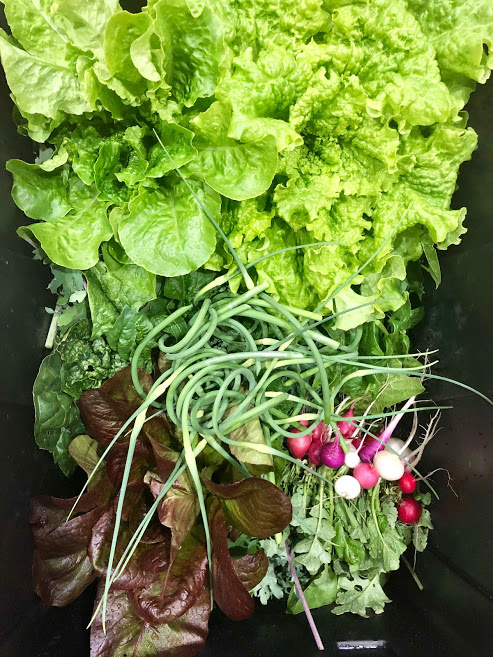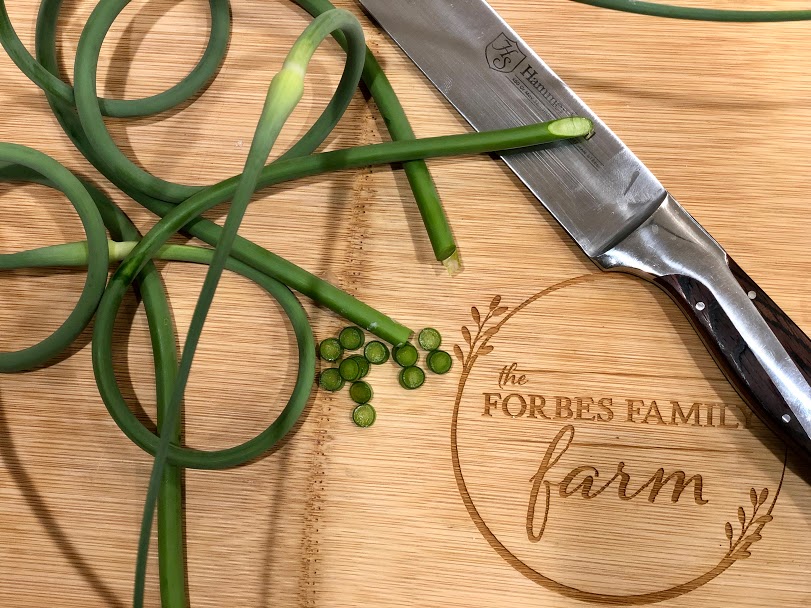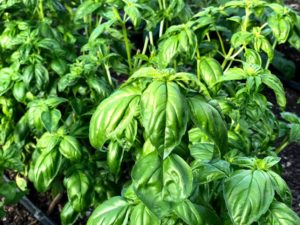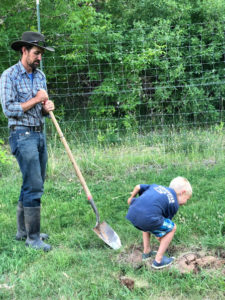A Bonus Crop
This week’s feature crop is a bonus crop. Like squash blossoms in the summer, garlic scapes are a crop you are not likely planning for during planting. But, they are a nice little surprise and they add excellent flavor when used in the kitchen.
What Exactly is a Scape?
Mr. Webster reminds us a scape is the long leafless flower stalk of the plant, extending directly from the root. In the case of garlic plants, the scape shoots up in mid-spring and forms into a curly shape before flowering. Like most alliums, garlic plants will produce beautiful flowers. But, if you’re growing garlic, it probably is not for the flowers. We grow garlic for the pungent cloves of the bulb which are loaded with health benefits.
If a garlic plant flowers, energy is diverted away from the bulb, resulting in a smaller harvest come summer. So, harvesting garlic scapes is not really an option, it must be done. But, this is where the good news comes in. Garlic scapes are delicious!

Harvesting and Cooking with Garlic Scapes
Harvesting garlic scapes is quite easy. It simply entails cutting the scape just above the spot where it emerges above the leaves. This is best done when the scape has taken on a nice shape with one or two curls. As with most crops, the earlier you harvest, the more tender the scape will be.
Once you have harvested your scapes, the next step is to put them to use in the kitchen. You can substitute the scapes for garlic cloves in nearly any recipe (one scape is generally the equivalent of one clove). Simply mince the scape and toss it in a stir fry, roast or soup for a classic garlic flavor.
Important note: Discard the flower portion just above the scape. There is an obvious point where the scape transitions to the flowering head. The scape is the only part you want to eat.
Make it a Meal
For those of you wanting to go beyond simply using scapes as a substitute for garlic cloves, consider making scapes the centerpiece of a dish. Roast or grill the scapes with a drizzle of olive oil, salt and pepper. Once tender, serve over pasta or risotto and accent with hearty spring greens like chard or spinach.




